Valley Voice: Energy storage technologies
Please accept marketing cookies to view this video.
Please accept marketing cookies to view this video.

Energy Valley member ZEG Power AS and H2 Production AS opened the world’s first commercial plant for clean hydrogen production with integrated carbon capture at CCB Energy Park at Kollsnes, Norway earlier this week.
“ZEG’s mission is to realize efficient and clean production of hydrogen from gas with integrated CO2 capture, offering technology for the production of affordable and sustainable hydrogen, which can contribute to global energy security,” said CEO of ZEG, Arild Selvig.
The opening represents a significant milestone for both companies in their pursuit of a sustainable, low-carbon future, aligning with the Norwegian government’s hydrogen and climate initiatives and the EU’s “Green Deal.”
“The ZEG H1 is an important step on our journey to becoming a commercial company. It is an honor to collaborate with H2P and our other high-quality partners, a cooperation which hopefully can propel ZEG to the forefront of next-generation clean hydrogen technology,” said Selvig.
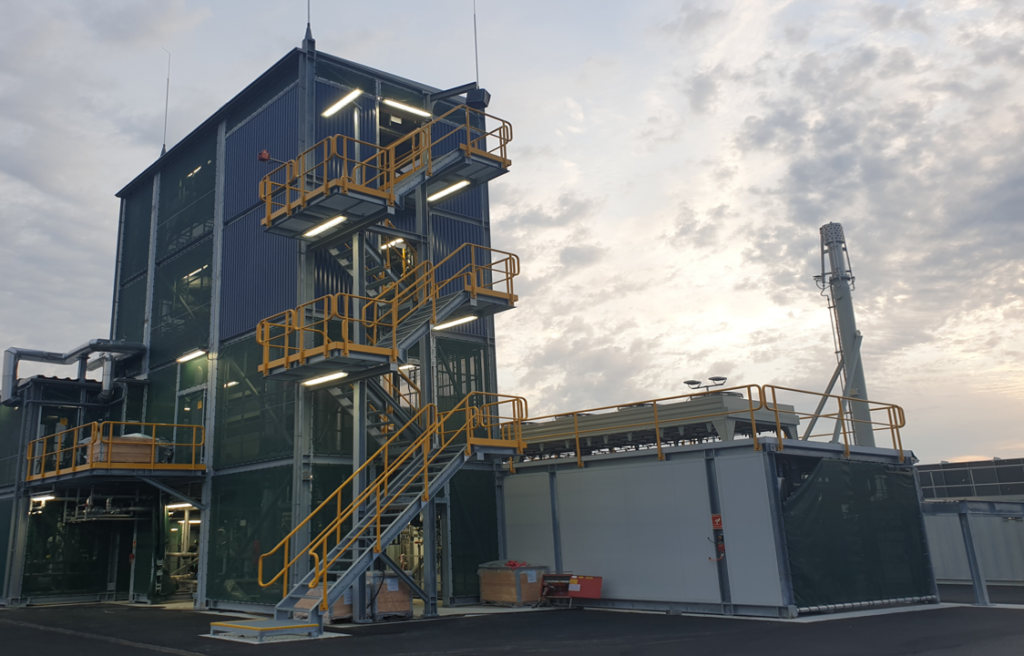
The ZEG H1 production plant, located near the Northern Lights CO2 storage facility, will produce approximately 1 ton of hydrogen per day and aims to provide captured CO2 for permanent subsea storage.
From an energy perspective, Norway holds a strategic position in Europe, and the ZEG technology has the potential to offer Europe clean hydrogen derived from Norwegian gas, making it a significant opportunity.
CCB Energy and H2P have played a leading role in the development of the Energy Park, focusing on environmentally friendly companies. H2P’s role as a future hydrogen producer and purchaser of the ZEG H1 plant has been crucial.

Energy Valley member Ezone Energy AS and Stepwise AS has announced a strategic collaboration.
“We are excited to integrate our technological advances with Stepwise’s software. This collaboration signifies our commitment to advancing energy efficiency but also aligns perfectly with our mission to reshape significant electricity uses through innovative theoretical principles,” says Martin Andersen, CEO of Ezone Energy.
The partnership will combine Ezone Energy’s technology offerings within Stepwise’s Energy Reduction Initiatives (ERIs) as part of their emission management platform.
“As we broaden our energy efficiency portfolio, collaborating with Ezone Energy is a step forward. Their innovative solutions combined with our ERIs ensure that our clients have the potential to achieve even greater levels of power efficiency,” says Pål Erik Vang, Principal Rig Specialist from Stepwise.
The fusion of their strengths aims to provide their clients with enhanced power efficiencies, particularly where transformers and power cables are pivotal to energy infrastructure.
About Ezone Energy
Ezone Energy, a Norwegian company, has developed technology that can significantly improve energy efficiency through the application of fundamentally new theoretical principles, with the potential to shape all significant uses of electricity.

Energy Valley member TGS has announced that TGS and PGS will combine to create a strong full-service energy data company.
“We are excited to announce a merger with PGS, completing a major milestone of building a fully integrated and robust global energy data provider. Our clients will benefit from scale, a unique technology portfolio and premier service quality. Bringing together two distinct, yet complementary, companies position us even better for a continued upcycle in the energy sector,” says Chief Executive Officer of TGS, Kristian Johansen.
Following the completion of the transaction, TGS and PGS shareholders will own approximately 2/3 and 1/3 of the combined company, respectively, on the basis of the share capital of each of the companies as of 15 September 2023.
The transaction is supported by the Board of Directors of both companies. Kristian Johansen and Sven Børre Larsen will continue as CEO and CFO post transaction.
“The seismic industry is changing whereby production seismic is becoming increasingly important alongside the traditional exploration seismic. By combining TGS and PGS’ complementary resources, we create a fully integrated geophysical service provider well positioned to generate significant value for all stakeholders” stated Rune Olav Pedersen, President & Chief Executive Officer of PGS.
The combined company will be a full-service geophysical data company with a strong offering in segments including Multi-Client data, streamer data acquisition, ocean bottom node (‘OBN’) data acquisition, imaging and new energy data. Moreover, the transaction helps mitigate supply chain risks and will add further to economies of scale and efficiency, enhancing the value offered to clients.
Definitive merger agreements are expected to be entered into in October 2023, with closing of the transaction expected during the first half of 2024.

Energy Valley member Deep Wind Offshore announces that Octopus Energy will join the ownership side of the company, together with the existing industrial owners Knutsen OAS, Haugaland Kraft and Sunnhordland Kraftlag.
“The potential for offshore wind is absolutely massive and in many ways we’re only at the start of this burgeoning industry. Working with Deep Wind Offshore is hugely exciting, providing access to new offshore wind markets for us where they have deep expertise. Ultimately, the more offshore wind farms built across the globe, the quicker we can drive down bills and create a more secure energy system for everyone,” says CEO of Octopus Energy Generation, Zoisa North-Bond.
Deep Wind Offshore is an international offshore wind developer with a pipeline of projects in Norway, Sweden and South Korea, countries that all have enormous wind resources and strong government support for offshore wind. The company aims to build 10 GW of new offshore wind by 2032, with 2 GW under exclusive development in South Korea.
“Welcoming Octopus as an investor will enable Deep Wind Offshore to accelerate international growth and strengthen its position in Norway. Knutsen OAS, Haugaland Kraft and SKL have formed the ideal basis for the company and will continue to be key owners,” says CEO of Deep Wind Offshore, Knut Vassbotn.
Octopus’ investment will accelerate Deep Wind Offshore’s growth and further develop the company’s pipeline of fixed and floating offshore wind farms, also towards new markets.
“The support from Octopus combined with our expertise means that we now have the strength to grow significantly, also internationally. The investments from Octopus and our connection with Norwegian municipalities ensure that we will not only provide plenty of renewable energy, but also a basis for future growth on both sides of the North Sea,” continues Vassbotn.
Deep Wind Offshore was founded in Norway in January 2021 and has since grown rapidly in a number of countries and has partnerships with large energy companies such as EDF Renewables and bp.
The vast majority of Octopus’s managed funds comes from large UK pension funds and institutional investors. This investment by Octopus will be funded purely by UK pension capital.
The agreement comes in the wake of Octopus’ announcement to release 20 billion dollars in investment for offshore wind globally. It marks Octopus’ entry into Norway and South Korea’s renewable markets, and increases the project portfolio of Octopus Energy Generation to 15 countries.
Forecasts estimate that the offshore wind sector could be worth $1 trillion by 2030 and span at least 24 markets, highlighting the scale of the industry’s growth potential.

For the past months we have worked closely with Energy Valley member Stem Agency on new webpages and an update and expansion of the Energy Valley brand identity. The new identity has been gradually adapted over the past few months, and now we can finally show you the real gem in process, our new webpage.
We hope that the new website will bring value to both our members, and anyone interested in what we do, bringing better user-friendliness and clarity. The expansion of the brand also brings elements to it that will make Energy Valley more recognizable and lead to a more consistent identity, visually connecting the website, our social media channels, presentations, and everything else we do.
Stem Agency is a digital design and communication agency that has helped us at Energy Valley with updated branding and a new and user-friendly website. In connection with the launch of our new website, Stem Agency offers all members a 1-hour free workshop where they can assess your branding, positioning and web, and assist with tasks regarding overall communication, graphic profile, and website.
Get to know one of our new members, Deep Wind Offshore, in this edition of Valley Voice. Hear CEO of Deep Wind Offshore, Knut Vassboten, talk about what the company does, what steps the company is taking to reach net-zero and more.
Watch it below or on Vimeo.
Please accept marketing cookies to view this video.
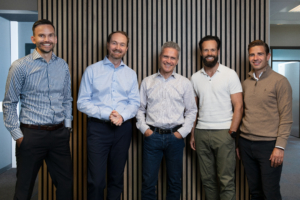
Energy Valley member, Nebb, has been acquired by the newly established software group, Init, giving the group a strong presence in Norway.
“Nebb has strong organisations in both Norway and North Macedonia constituting a great foundation for further development and growth, in which we have found Init to be the best partner for us,” says CEO of Nebb, Alexander Risøy.
Nebb will maintain its current activities, including work and project approaches, and the management will continue in their current roles.
“We look forward to becoming an even stronger partner in and outside Norway and collaborate with all our new colleagues throughout Europe,” continues Risøy.
With the acquisition of Norwegian Nebb, Init strengthens its position on the Scandinavian market.
“Nebb will especially contribute to our joint group with competences in software development, process knowledge, IT/OT architecture and specialized solutions for marine and subsea control systems,” says CEO of Init, Knut Akselvoll.
The group says they have ambitions of becoming the Nordic region’s leading supplier of industrial IT and automation solutions for the industry.
“With Nebb as part of the Init group, we now have a strong presence in Norway, as well as Denmark and Sweden,” Akselvoll continues.
Init was established in January 2022 with the merger of Danish Picca and PD- Automation, and includes Swedish-Norwegian Acobia, Swedish Martensson Consulting and the Danish companies Logimatic, AN Group, Inuatek, 3Tech Automation, ProjectBinder, MBB Consult, Daniit. and now Norwegian Nebb.
Since 1996, Nebb has provided solutions for automation and industrial IT within process industry, pharma, marine, energy, and subsea. Nebb aims to be at the very forefront of technology and a center of excellence in their fields of competences. The company is headquartered in Asker, Norway and has an office in Skopje, North Macedonia.
Caption picture: With Nebb being acquired by Init, it will strengthen the groups presence in Norway. From left: COO of Nebb, Espen Trengereid; CEO of Nebb, Alexander Risøy; CEO of Init Group, Knut Akselvoll; CTO of Nebb, Espen Davidsen and CBDO of Init Group, Frederik Klinge.

Unsure how to spend your time at Arendalsuka? We have put together a list of events that our members and collaborators are responsible for or take part in.
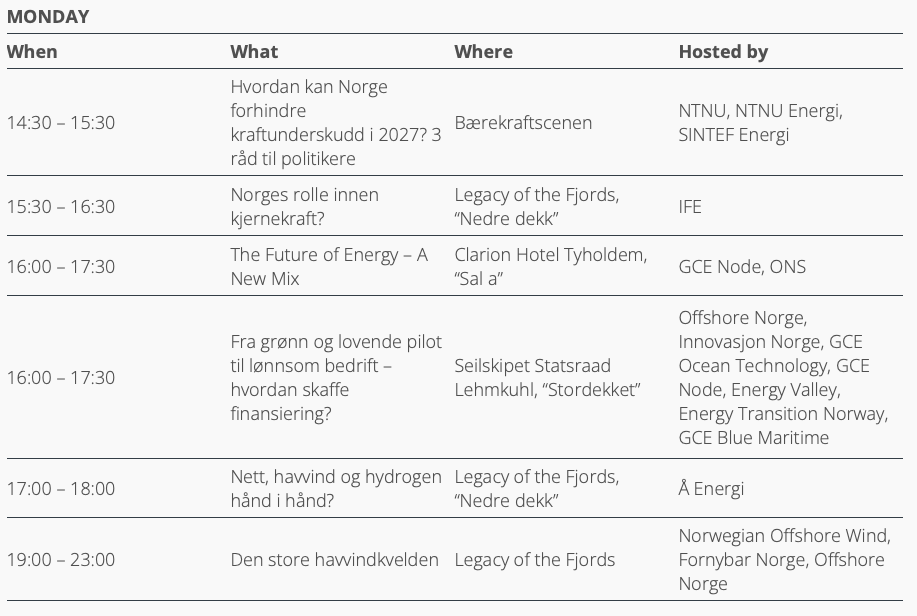
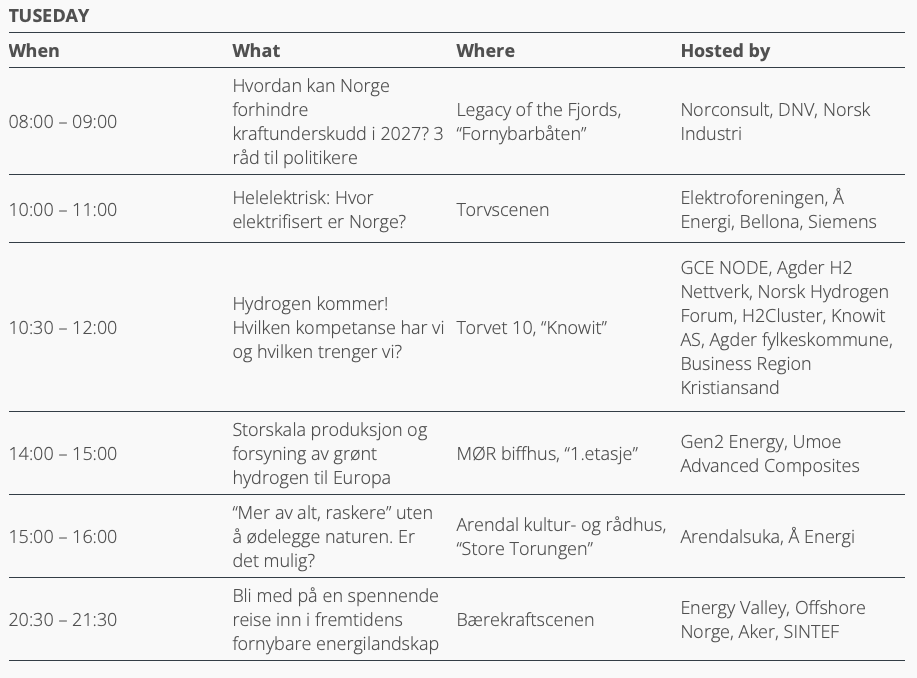
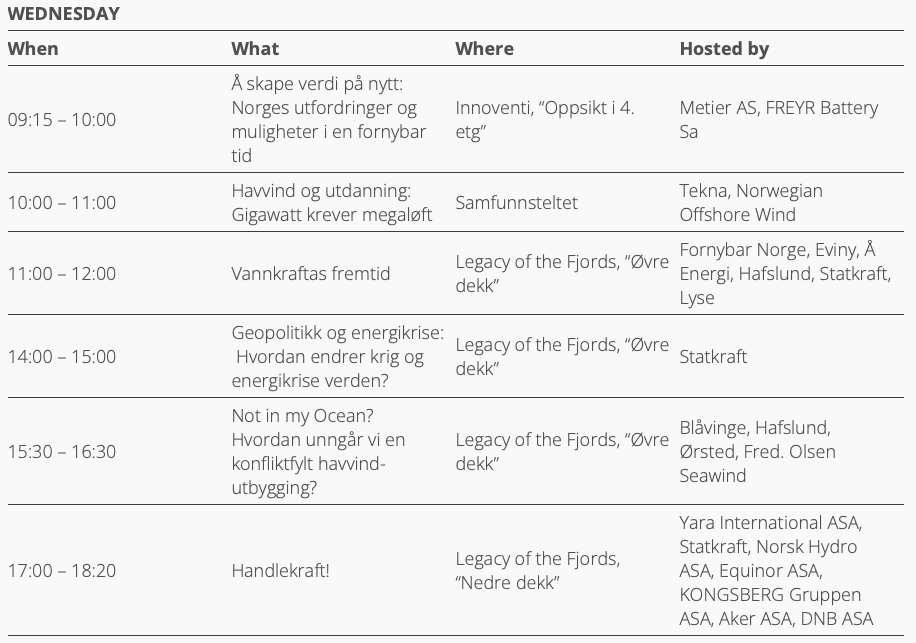

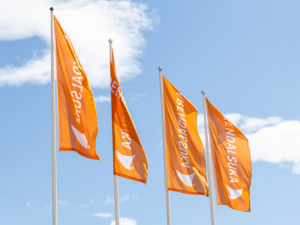
Energy Valley invites you to a panel discussion about the future of renewable energy in Norway at Arendalsuka.
The event, hosted in collaboration with SINTEF, SEB, and Capgemini, will be held at one of the largest venues at Arendalsuka, Arendal Kino, with a capacity of 260.
What does the future have to bring for renewable energy? Norway has a unique position to take the lead in the global transition to renewables. But are we about to fall behind? Will we remain an oil producer, or will we be able to make the transition? And what is needed to accelerate this transition to both reach net-zero goals and make new jobs?
These, and other questions will be debated the panel discussion, named “Bli med på en spennende reise inn i fremtidens fornybare energilandskap.” Leaders from the industry, finance, and academia will provide their views on the matter.
The event, taking place at Bærekraftscenen in Arendal, will last from 20:30 to 21:30, after which light refreshments will be served – providing a venue for socialization.
At the event, you will meet the EVP at Capgemini Invent, Karl Thomas Reinertsen, Country Manager Norway at SEB, John Turesson, Head of Strategic Export Priorities at Innovation Norway, Eli Wærum Rognerud, Chief Commercial Officer (CCO) at ZEG Power, Kathrine Ryengen, CEO at Siemens AS and Managing Director Siemens Smart Infrastructure Nordic & Baltic, Nils Klippenberg, and lastly, Executive Vice President Sustainability at SINTEF, Nils Røkke.